Why do horse need shoes? This is one of the spiciest debates in the equine community. Hopefully, this article doesn't step on any toes, or hooves for that matter! As with most controversial topics, there is no simple answer. Shoeing is a well-established practice of working horses that's been around since about 1000 AD, so the convention is likely not without some merit.
We'll investigate the details of horseshoeing and weigh the benefits of shod and unshod horse hooves.
What is a Horseshoe?
A horseshoe is a product designed to protect a horse's hooves from wear and tear. They are U-shaped bands that fit the hoof capsule underneath the foot and add a layer of protection between the hoof and the ground.
What Are Horseshoes Made of?
Horseshoes are made of metal or a synthetic material like plastic. Although metal horseshoes are the most common type, steel is the dominant choice. Magnesium, titanium, and copper are rarer but not unheard of for special horseshoes. The kind of horseshoe you purchase will depend on your budget, horse activity, and health.
Steel
Steel horseshoes are the most dominant choice because they are durable and cheap. The neat thing about steel horseshoes is that they can be reset for multiple shoeings. Since steel is so strong and malleable, a very experienced farrier can reshape steel horseshoes between shoeings. The same shoes can be altered and reapplied, saving riders money by forgoing the cost of a new pair of shoes.
Aluminum
Aluminum shoes are lighter than steel shoes. Their weight makes them the preference for racehorses because they don't inhibit the horse's speed. However, aluminum horseshoes are more expensive and wear down quicker than steel. You also can't recast them for multiple shoeings.
Polyurethane (Plastic)
Plastic horseshoes are thicker than aluminum and steel shoes but are the lightest. One benefit of plastic is its ability to absorb shocks. This quality makes them ideal for horses with arthritis or joint issues because it reduces the impact on their connective structures. Plastic horseshoes last longer than steel and aluminum shoes.
What is the Purpose of Shoes?
What is the purpose of a horseshoe? Domesticated horses are subject to conditions they don't encounter in the wild. In nature, horses live in arid climates. As people took horses worldwide and put them to work, horses found themselves stepping on soft pastures and mud. The water in these moist terrains softens the horse's hooves and makes them prone to damage. Not to mention, generations of selective breeding have resulted in some weak-hoofed bloodlines.

People recognized the need for some hoof modification very early on. Equestrians have been shoeing their horses for thousands of years. The practice has its pros and cons, but it serves some vital functions:
Protection
What is the purpose of horseshoes? The chief purpose of horseshoes is hoof preservation. Some domesticated horses are prone to hoof damage or wear from challenging or wet terrains, intense training, or even unsanitary hay. The additional weight of a rider or wagon also puts more stress on the horse hooves themselves. What's the point of horseshoes? Horseshoes fortify the hooves and give them more durability to withstand these taxing conditions.
Gait Manipulation and Correction
Shoes can alter a horse's gait. Special horseshoes crafted with particular weights, shapes, and thicknesses can correct unusual gaits that result from bone or muscle issues. Horseshoe purpose similarly, special shoes can manipulate a horse's gait purely for aesthetic purposes.
Medical Use Of Corrective Shoeing
They make special horseshoes to help protect compromised hooves, ease joint/tendon strain, and alleviate pain associated with these conditions. In addition, although it's not intended to relieve stress, you might want to consider CBD for horses to soothe the discomfort and irritation associated with tendon strain. At Holistapet, we offer equine CBD oil and pellets made from only the best natural and organic ingredients. Always go to your veterinarian for expert medical advice and treatment.
Navicular Disease
Navicular disease refers to inflammation or degeneration of the navicular bone, which is a vital part of the hoof structure. It’s one of the leading causes of equine lameness. Special shoes that lift and give additional support to the heel may improve this condition; wedged and bar horseshoes are both popular choices. These horseshoes can rebalance the hoof and set the navicular bone in its proper place.
Arthritis & Tendonitis
Horseshoes can help horses that struggle with joint and tendon pain. Corrective shoeing rebalances misaligned structures and provides the horse with comfortable extra support. These corrections decrease the impact on a horse's connective structures, reduce joint and tendon strain, and ease soreness.

Hospital Plates
Horses suffering from bacterial hoof infections like thrush, canker sores, or abscesses will benefit from a hospital plate. A hospital plate protects the infected hoof from dirt, pathogens, and further trauma while allowing the sole to be accessible for cleaning. Hospital plates need to be attached underneath shoes to protect a horseshoe.
Traction
Horses are expected to perform in all kinds of conditions: ice, snow, mud, you name it, riding horses do it. Special horseshoes designed for these terrains provide extra traction and prevent your horse from slipping or getting stuck. The additional grip significantly reduces the strain on your horse's muscles and hooves.
Do racehorses need shoes?
Yes, racehorses generally wear shoes to protect their hooves and provide traction on different track surfaces. However, not all racehorses wear the same type of shoes, and some may go barefoot depending on their specific needs, the type of track, and the conditions.
Here are a few key reasons why racehorses wear shoes:
- Protection: The constant impact on hard surfaces can wear down their hooves. Shoes protect the hoof wall and reduce the risk of cracks and other damage.
- Traction: Shoes provide better grip on dirt, turf, or synthetic tracks, reducing the risk of slipping and injuries. Racehorse shoes are often made with specialized materials or designs that enhance traction.
- Support: Shoes can correct or support hooves if a horse has specific gait issues or conditions, which can improve performance and reduce the risk of injury.
- Injury Prevention: Shoes can help stabilize the horse's hoof structure and reduce strain on tendons and ligaments, which is especially crucial given the high speeds and physical demands of racing.

Horseshoes vs. Barefoot: Is One Better Than The Other?
Many argue that wild horse do not have shoes and do just fine. This fact is undeniable, but wild and domesticated horses don't live under the same conditions. Others say that a horseshoe causes more damage to the hoof than it aims to prevent. Improper shoeing can have terrible consequences on your horse's feet, but should that stop you from visiting the farrier?
The answer to whether your horse should go barefoot or shod is as follows: There is a lot of grey area to consider. Your horse's lifestyle, environment, and hoof condition all come into play when deciding whether to wear shoes.
Barefoot Horses
Horses without shoes are "barefoot." The hooves of a barefoot horse naturally grow and wear as the horse ages and interact with the environment. Equestrians claim that forgoing shoes provides more blood circulation in the foot and healthier hoof growth. When horses wear shoes, you save on the farrier and shoe expenses, so barefoot is more economical.
That's not to say you don't need to care for your horse's hooves. Hoof maintenance is a crucial part of horse care. Your horse's hooves are constantly growing, and if your horse is leisurely or stays on soft terrains, their hooves will not wear as much. Hoof trimming is required more often in these circumstances.
Barefoot horses should have their hooves trimmed every five to six weeks, but this may vary. Assess your horse's hooves continually and keep up with cleaning. Be cautioned! If your horse is suffering from tendonitis, contracted heels, weak soles, or one horse is recovering from laminitis, then going barefoot will not benefit them.
Shod Horses
Horses with shoes are considered "shod." Environmental and physical stressors in a horse's daily life can injure the hoof. A shod horse receives some hoof protection from their horseshoes. Because horseshoes can improve hoof traction on rough ground, a horse with shoes might be better prepared to handle challenging terrains like a rocky mountainside or icy path.
Special horseshoes can also benefit horses with certain health conditions, like arthritis, by easing joint strain. Shoeing is not without risks. A lousy shoe or a flawed shoeing procedure can spell big trouble for your horse. Misplaced nails can cause abscesses in your horse's hoof. If the shoe isn't securely attached, it can come loose and get caught on objects.

Snagged horseshoes can tear the hoof wall or cause further damage to surrounding muscles and tendons. And if the shoe doesn't fit correctly, it can cause undue strain on your horse's connective structures which results in pain. Because a horse's hooves are always growing, shod horses need new shoes every four to six weeks.
When a horse visits the farrier for a new pair of shoes, the farrier will trim and clean the hooves before applying the new horseshoes. Then, they ensure the new horseshoes fit correctly and adjust the shoes as needed.
Transitioning from Shod to Barefoot
When you remove your horse's shoes, their soles will be slightly more sensitive than in the pre-shoe days. This is simply because they haven't felt the rocky ground yet. You might notice your horse stepping more cautiously in the week after they ditched their shoes. Reduce their workload or keep them on soft terrains to avoid bruising or injury. Putting a fresh sole on a rocky path is the perfect recipe for bruising, injury, and pain.
Do All Horses Need Shoes?
In short - no. You should shoe a horse if you feel it will bring them more benefit than not. But if the horse has healthy feet and hooves and is at low risk of injury, you don't need a shoe! Many riders turn to temporary protective measures, like hoof boots, when the horse's hooves are subject to more strain. Hoof health should be assessed continually. What is the point of horseshoes? Your horse may benefit from horseshoes at one point but be better off without them later.
Final Thoughts
Whether or not your horse will wear shoes is all up to you. Many horse owners swear by barefoot, trail riding but you should keep in mind what's best for your horse. Hoof health, environment, horse owner, and activity level are the most significant factors to consider when deciding whether to shoe your horse. A working horse should be shod unless they have the hooves of a Pegasus.
Read Next: Depressed Horse: 5 Easy Tips to Fight and Prevent Equine Depression

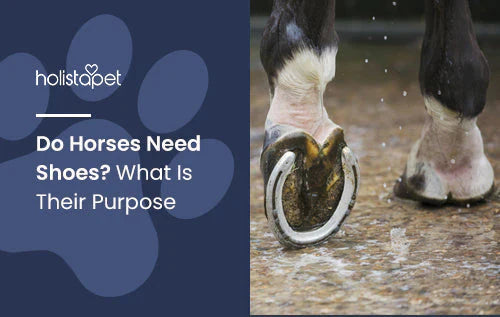
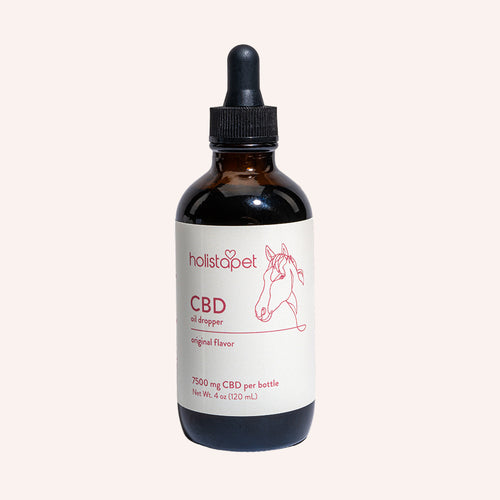 CBD Oil for Horses - Fast Acting
CBD Oil for Horses - Fast Acting
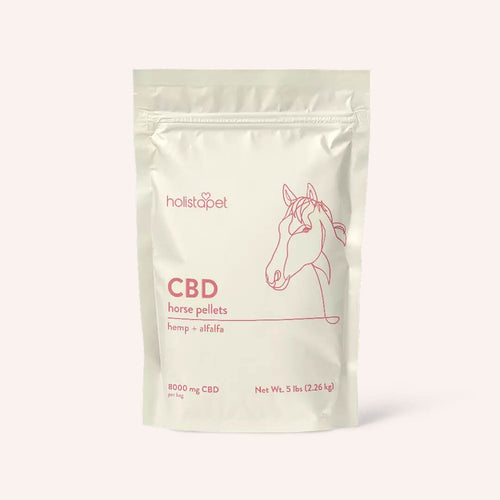 CBD Pellets for Horses - Easy Dose
CBD Pellets for Horses - Easy Dose
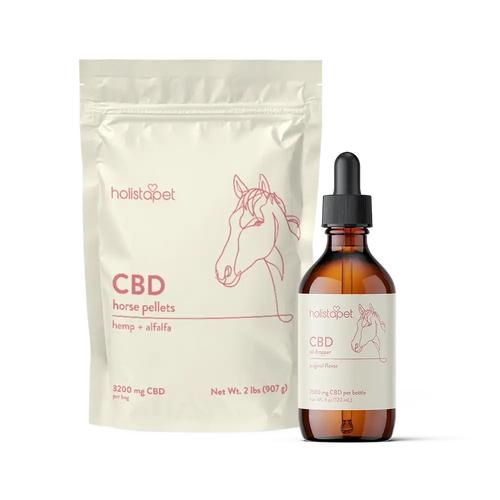 "Ridin' On My Horse" Bundle - Highly Rated
"Ridin' On My Horse" Bundle - Highly Rated


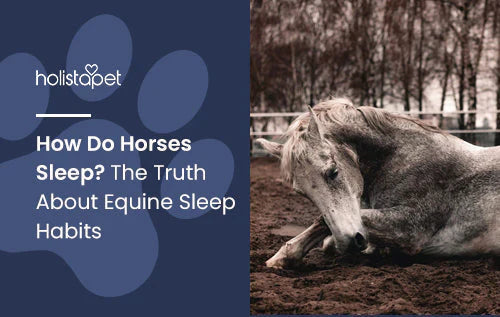


Leave a comment
All comments are moderated before being published.
This site is protected by hCaptcha and the hCaptcha Privacy Policy and Terms of Service apply.